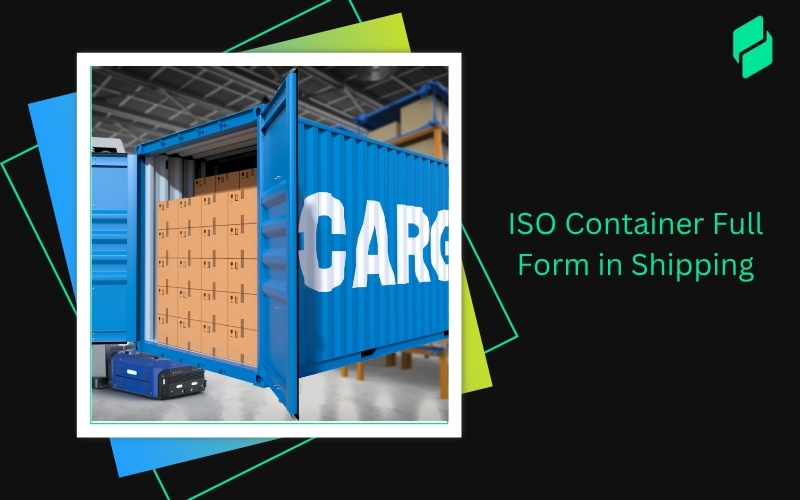Imagine you're about to ship a software product internationally but are unsure about the customs procedures. How do customs officers know now what you're shipping and how much duty to charge?
This is where the Harmonized System (HS) Code comes in. Let's delve into the significance of HS Codes, especially for software-related transactions.
Optimize your business: use unlimited savings with Pazago fulfilled now!
Get Started ->What are HS Codes?
HS Codes, or Harmonized System Codes, are standardised numerical codes used to classify goods in international trade. They are vital to the global logistics, supply chain, and freight forwarding industries.
These codes help ensure that your products are accurately identified and categorised, facilitating smooth customs clearance and compliance with international regulations.
Definition and Purpose of HS Codes
At its core, an HS Code is a six-digit identification code. The World Customs Organization (WCO) developed this system to create a uniform classification for products worldwide. The primary purpose of HS Codes is to simplify the international shipping process.
Using a standardised code, customs officials can easily determine the nature of the goods, applicable duties, taxes, and any restrictions or regulations.
Think of HS Codes as your products' DNA. Just as DNA carries genetic information, HS Codes carry essential details about your goods.
Whether you're shipping software, electronics, or clothing, each item will have a specific HS Code that tells customs authorities exactly what it is.
Structure and Classification System of HS Codes

Understanding the structure of HS Codes is crucial for anyone involved in the import and export business. Each HS Code consists of six digits, divided into three pairs. Here's a breakdown of what these digits represent:
- First Two Digits: Represent the chapter of the product. For example, Chapter 85 covers electrical machinery and equipment, including software.
- Next Two Digits: Specify the heading within the chapter. For instance, heading 85.23 pertains to discs, tapes, solid-state non-volatile storage devices, and other media for recording sound or other phenomena.
- Last Two Digits: Identify the subheading and provide a more detailed product description. For example, subheading 85.23.49 refers specifically to software on physical media.
This hierarchical structure allows for a detailed and precise classification of goods. For software, an HS Code might look like 8523.49, where "85" is the chapter for electrical machinery, "23" is the heading for media, and "49" is the subheading for software.
Also Read: Import and Export Trade: Understanding Its Impact and Strategies In India
Why Are HS Codes Crucial in International Trade?

HS Codes are the backbone of global trade. They standardise the classification of goods, ensuring every product is easily identifiable, no matter where it's shipped. Here's why they're so important:
- Streamlining Customs Procedures: HS Codes simplify the customs clearance process. When you provide the correct HS Code, customs officers can quickly determine the product category, applicable duties, and any restrictions.
- Ensuring Compliance: Accurate HS Codes ensure compliance with international trade regulations. Misclassification can lead to fines, delays, and even legal issues.
- Facilitating Trade Agreements: HS Codes are essential for implementing trade agreements and determining tariff rates. They help apply the correct duties and taxes per bilateral and multilateral agreements.
- Improving Supply Chain Efficiency: Using the correct HS Code minimises the risk of shipment delays and ensures smooth logistics operations. This is crucial for maintaining an efficient supply chain and meeting customer expectations.
The Significance of HS Codes for Software-Related Transactions in India
The correct classification under the HS Code system is vital for software, especially in a dynamic market like India. Let's explore why HS Codes are essential for software-related transactions in India.
1. Accurate Classification of Software Products
Software products can be tricky to classify due to their intangible nature. However, they fall under specific HS Codes that distinguish between physical media and downloadable software. For instance, software on a CD might have a different HS Code than downloaded from the internet.
2. Ensuring Compliance with Indian Regulations
India has stringent regulations for importing and exporting software. Using the correct Software HS Code ensures compliance with these regulations, avoids legal complications, and ensures smooth customs clearance. This is particularly important for businesses dealing with large volumes of software transactions.
Also Read: Import and Export Services: Basic Guidelines and Procedures
3. Optimizing Duties and Taxes
Correctly classifying software with the appropriate HS Code helps apply the correct duties and taxes. This is crucial for pricing your products competitively in the Indian market. Misclassification can lead to overpaying duties or penalties, affecting your bottom line.
4. Facilitating Export Incentives
India offers various export incentives for software products. Accurate HS Code classification is essential to qualify for these incentives. It ensures that your software products are recognised under the correct export category, maximising the benefits your business can receive.
Harmonise Your Trade Practices!
Harmonise your trade documentation and processes with Pazago’s standardised solutions. Enjoy seamless trade and smooth global transactions.
HS Codes for Importing and Exporting Software: India
In India, the ITC-HS (Indian Trade Classification based on Harmonized System) code is used to classify goods for import and export. The standard HS code system is a 6-digit classification, but India extends this to an 8-digit code for more specificity.
Here is a comprehensive table that includes all the HS codes for importing and exporting software we have discussed:
Additional Information
- 8523.80.20: Specifically covers software imported through electronic transmission.
- 8523.49.90: Covers other forms of software, particularly those on physical media such as CDs or DVDs.
- 49070030: Pertains to documents that grant the right to use software, usually indicating licenses or usage rights.
These codes are part of Chapter 85, encompassing "Electrical machinery and equipment and parts thereof; sound recorders and reproducers, television image and sound recorders and reproducers, and parts and accessories of such articles”.
Navigate Smoothly Across Borders!
Streamline your international shipments through comprehensive customs clearance support with Pazago. No more uncertainties about duties or delays—just efficient, compliant trade.
Documentation and Compliance Requirements for Software Imports and Exports in India
Let’s explore the key requirements and simplify your path to a successful software trade.
Seamless Compliance, Seamless Trade!
Pazago simplifies trade documentation and compliance. Store and manage all essential documents in one secure place to keep your trade moving!
Also Read: Understanding the Shipping Bill: Its Types and Meaning
HS Codes for Software Services
HS codes for software services can be more complex to classify because services are not typically categorised under the standard Harmonized System codes primarily used for tangible goods.
However, software services can still be classified under related headings depending on their nature. Here are some HS code classifications that might apply to software services:
Potential HS Codes for Software Services
- 8523.80.20: Software (other than packaged software) through electronic transmission – though typically used for tangible media- can sometimes include software services delivered electronically.
- 998314: Information technology (IT) design and development services – includes design and development of software and IT systems.
- 998315: IT infrastructure provisioning services – services involving the installation, management, and operation of IT infrastructure.
- 998316: IT support and management services – includes services like maintenance, support, and operation of software and IT systems.
Challenges and Considerations in Determining the Correct HS Code for Software
Ever felt the frustration of classifying your software under the correct HS Code? You're not alone. Many in the import and export industry face similar challenges.
Let’s dive into the common hurdles and practical tips to ensure compliance and avoid penalties.
Common Challenges in Determining the Correct HS Code for Software

1. Complex Nature of Software
Software can be complex and diverse. Is it a game, a business application, or an operating system? Each type might fall under a different HS Code. For instance, software on physical media could use HS Code 8523.49, but what about software downloaded from the cloud?
2. Intangible Goods
Unlike physical goods, software is intangible, making its classification less straightforward. The absence of a physical form complicates the assignment of a specific HS Code.
3. Frequent Updates and Versions
Software products are frequently updated, and new versions are released. Each update might have different features, affecting its classification. Keeping track of these changes and ensuring the correct code is used can be challenging.
4. Bundled Products
Software often comes bundled with hardware. Determining whether to classify the item as software or hardware can be tricky. For example, a gaming console with pre-installed games may require different hardware and software codes.
Also Read: Exploring Import Procedures and Regulations from China to India
Tips for Ensuring Compliance and Avoiding Penalties
1. Thoroughly Understand Your Product
To classify your software correctly, you need a deep understanding of its features and functionalities. Ask yourself: What does this software do? How is it delivered? Is it part of a more extensive system?
2. Consult the Tariff Schedule
Consult the latest tariff schedule and guidelines provided by customs authorities regularly. Websites like the Indian Trade Portal and the Directorate General of Foreign Trade (DGFT) provide valuable resources.
3. Use Classification Tools
Tools and databases are available to help you determine the correct HS Code. Utilise these resources to cross-check your classification. The ITC-HS code search tool is beneficial for finding the appropriate code for your product.
4. Stay Updated with Regulations
Regulations and classifications can change. Keep informed about any updates in the HS Code system and international trade laws. Utilise Pazago Insider for alerts from relevant trade authorities to stay updated.
5. Maintain Detailed Documentation
Accurate and detailed documentation is crucial. Ensure all paperwork, including commercial invoices, packing lists, and certificates of origin, correctly reflects the HS Code used. This helps ensure smooth customs clearance and reduces the risk of penalties.
6. Seek Expert Advice
When in doubt, consult with customs brokers or trade compliance experts. Their expertise can help you navigate the complexities of HS Code classification and ensure you comply with regulations.
Let Pazago's precise tracking and automated updates safeguard your software shipments against common classification errors.
Conclusion
Accurately classifying your software under the correct HS Code ensures compliance with international trade regulations, avoids penalties, and facilitates smooth customs clearance.
The importance of getting this right cannot be overstated—misclassification can lead to delays, fines, and increased costs, impacting your supply chain and logistics operations.
Remember, staying informed, using the right tools, and maintaining accurate documentation are key strategies to navigate the challenges of software classification. Doing so can ensure your business remains compliant and competitive globally.
Elevate Your Trade Operations!
Transform your international trade operations with Pazago’s fully managed platform. Let Pazago be your partner in achieving global business success from order processing to delivery.


.png)








